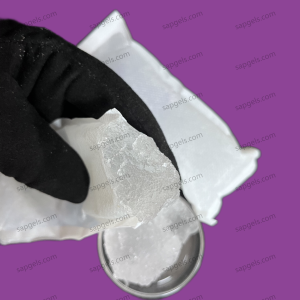Gel Ice Packs: The Role of Natrium-Polyacrylat
Gel-Eispackungen, also known as cold packs, offer a contemporary alternative to traditional ice bags. They are widely used for:
- Reducing body temperature
- Transporting perishable items like medicines, food, and flowers
- Providing pain relief for sports injuries and other emergencies
-

SAPGELS polymer11
The Appeal of Gel Ice Packs
Gel ice packs have become increasingly favored over traditional ice bags due to several key benefits:
- Soft and pleasant texture
- Attractive appearance
- Effective bacterial growth inhibition
- Superior efficiency, with a specific heat capacity 3-4 times greater than ice
The Crucial Ingredient: Sodium Polyacrylate
The main component in gel ice packs is sodium polyacrylate, a superabsorbent polymer. This chemical can absorb a significant amount of water, forming a gel. For instance, one gram of sodium polyacrylate can absorb 300 to 1000 grams of pure water, making it sufficient to use a minimal amount in each gel ice pack.
Benefits of Sodium Polyacrylate
Sodium polyacrylate offers several advantages, making it ideal for use in gel ice packs:
- High specific heat capacity
- Low cost per pack
- Non-toxic and environmentally friendly
Diverse Applications of Sodium Polyacrylate
Besides gel ice packs, sodium polyacrylate has a variety of applications in daily life, including:
- Thermal Insulation: Used in ice towels and ice pillows
- Absorbent Materials: Found in diapers, sanitary napkins, and nursing pads
- Water Blocking Solutions: Utilized in inflatable sandbags and for waterproofing cables
- Expanding Materials: Employed in inflatable toys and similar products
By harnessing the unique properties of sodium polyacrylate, gel ice packs provide a modern, efficient, and versatile solution for cooling and pain relief needs.

